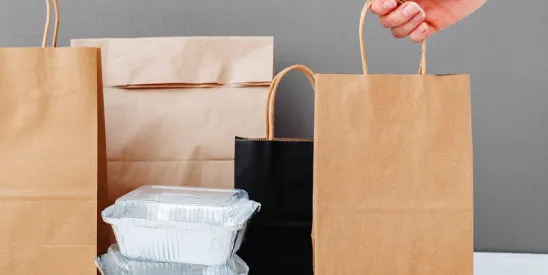Key Takeaways
- What Happened? On May 21, 2024, Minnesota Governor Tim Walz signed the Packaging Waste and Cost Reduction Act (the Act). Minnesota is the fifth state to enact laws implementing packaging EPR rules, alongside Oregon, Maine, Colorado, and California. Like some states, Minnesota’s EPR law requires producers to appoint a Producer Responsibility Organization (PRO) by January 2025 to set specific performance targets for covered materials concerning criteria like recyclability, refillability, and reusability. Minnesota is also the first in the nation to expressly include boat wrap in an EPR program.
- Who is Affected? Entities that introduce one ton or more of “covered materials”—such as single-use packaging, paper products, and boat wrap—into Minnesota annually.
- What Should I Do? Companies that sell or distribute one ton or more of covered packaging and paper products in Minnesota annually should begin reviewing their operations to determine whether they are obligated as “producers” under the new law. These obligations include adhering to stewardship plans and paying producer fees. If a producer violates the Act, they will face a civil penalty not to exceed $25,000 per day of violation. If a producer violates the Act a second time within five years of approval of their stewardship plan, the producer will face a civil penalty not to exceed $50,000 per day of violation; a third violation would result in a civil penalty not to exceed $100,000 per day of violation.
- What Makes Minnesota’s EPR Law Unique? Minnesota has expressly included boat wrap, a plastic film used to protect boats during storage, in its EPR program. Trade press reports Minnesota as fourth in the nation for boat ownership, with over 600,000 motorized boats. When boats are taken out of storage, the film used to protect them is usually thrown away. Product stewardship programs for boat wrap are intended to require producers to pay the costs of managing this waste and to encourage boat wrap recycling.
Background
Extended Producer Responsibility (EPR) legislation typically requires “producers” of in-scope packaging to pay for a portion of the cost associated with recycling or otherwise diverting that packaging from landfills. Minnesota’s new law requires producers to pay for a portion of the recycling program costs and alter their packaging to be recyclable, reusable, or compostable by 2032.The law also directs the Minnesota Pollution Control Agency to study recycling methods to determine which materials are recyclable through the state’s existing recycling infrastructure and which materials require alternative collection.
Key Definitions
Definitions of producers and covered packaging vary depending on the state’s EPR laws for packaging. These definitions matter because they determine who and what is included in the scope of the EPR’s framework. Minnesota’s EPR law defines producers, in-scope packaging, and in-scope paper products as follows:
- Producer: Like other states with packaging EPR laws, Minnesota’s law uses a tiered definition of “producer” to identify the party responsible for compliance. “Producers” are entities who first introduce “item[s] sold in or with packaging” into the state, such as retailers at physical locations or retailers through “e-commerce, remote sale, or distribution.” Minnesota also defines producers as those who package items that ship to retailers or directly to consumers. If the item is sold “with packaging under the brand of the item manufacturer or is sold in packaging that lacks identification of a brand,” the producer is the item’s manufacturer. If the item is sold in packaging without the brand identification of the manufacturer, “the producer is the brand owner of the item.” Certain publishers of magazines, publications, etc., are also considered paper product producers.
- In-Scope Packaging: Minnesota’s EPR law broadly defines packaging as “containers or any items that provide transport, marketing, protecting, or handling of a product.” This definition includes pallets and packing materials like closures, coatings, cushioning, dyes, inks, and labels. The law contains limited exemptions for packaging for specific uses such as infant formula, medical supplies, or print publications.
- In-Scope Paper Products: Minnesota’s EPR law defines paper products as those primarily made from wood pulp or other cellulosic fibers. Recycling facilities will not accept bound books or paper products due to their unsafe nature, which makes them not paper products under this law.
Compliance Timeline
The timeline below outlines a few key Minnesota EPR milestones:
- January 1, 2025: producers must appoint a producer responsibility organization (PRO).
- March 1, 2025: through their stewardship organization, producers must submit a stewardship plan to the commissioner for review by this date.
- July 1, 2025: packaging producers must be a member of a PRO registered in Minnesota.
- September 1, 2025: boat wrap producers must participate in an approved stewardship plan through a stewardship organization to sell boat wrap.
- January 1, 2029: producers may not introduce covered materials without entering into a written agreement with a PRO to operate under an approved stewardship plan.
- February 1, 2031: producers cover at least 90% of net recycling costs.
- After January 1, 2032: no producer may introduce covered materials unless the materials meet certain criteria as recyclable, refillable, or reusable, or the producer seeks an extension from the commissioner. The PRO will determine the criteria through a statewide needs assessment. Based on this assessment, the PROs must set specific performance targets for product reuse, return, composting, waste reduction, and post-consumer recycled content rates by the end of the stewardship plan’s term. Additionally, the PRO determines what units to measure each performance target in, and the measurement criteria for these targets must be outlined in each stewardship plan.
Future Implications
Minnesota has joined the growing number of states enacting EPR laws, reflecting a rising state trend toward EPR legislation. Additionally, the law requires producers of covered materials in Minnesota to meet statewide waste reduction performance targets by 2032. Further, Minnesota’s legislation includes boat wrap, hinting that other states with high boat ownership could follow suit with their EPR initiatives. For now, the Minnesota Pollution Control Agency has not yet released any additional information regarding implementation.







 />i
/>i
